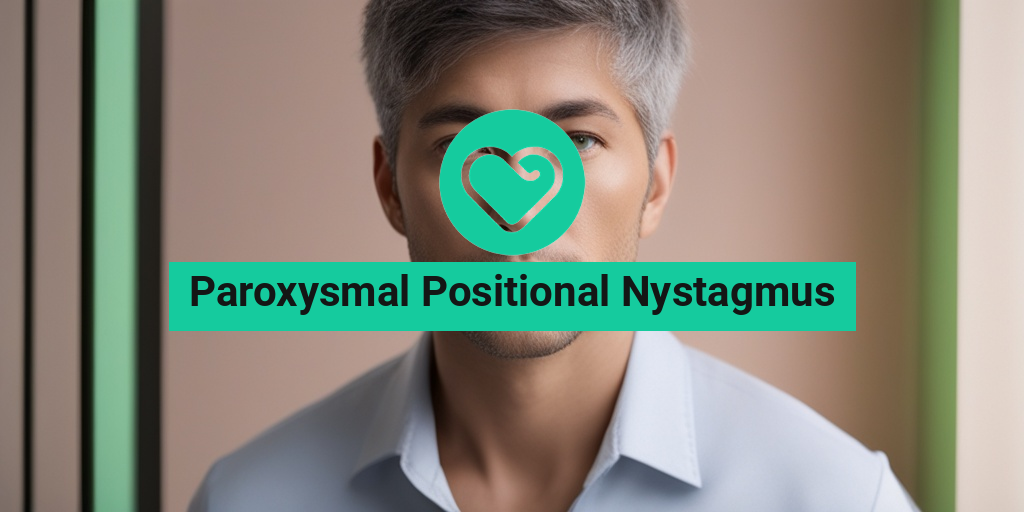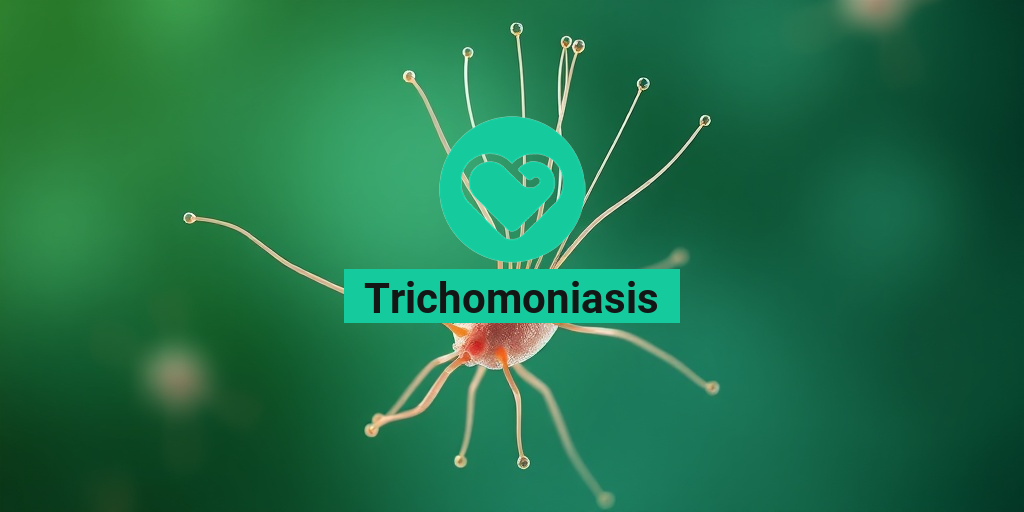What Is Paroxysmal Positional Nystagmus?
Have you ever experienced a sudden, intense feeling of dizziness or spinning when you change positions, like getting out of bed or standing up from a seated position? If so, you might be familiar with paroxysmal positional nystagmus (PPN). But what exactly is it, and how does it affect your daily life?
Defining Paroxysmal Positional Nystagmus
Paroxysmal positional nystagmus is a type of vertigo that occurs when there is a sudden change in the position of your head or body. It’s characterized by a brief, intense episode of vertigo, often accompanied by nystagmus – a type of involuntary eye movement. This can cause your eyes to move rapidly or jerk back and forth, making it difficult to focus or maintain your balance.
The term “paroxysmal” refers to the sudden, brief nature of the episodes, which can last anywhere from a few seconds to several minutes. The good news is that PPN is usually a benign condition, meaning it’s not a sign of a more serious underlying health issue.
Causes and Triggers of Paroxysmal Positional Nystagmus
While the exact causes of PPN are still not fully understood, research suggests that it may be related to issues with the inner ear or the balance system in the brain. Some common triggers of PPN include:
- Changes in head position, such as getting out of bed or standing up quickly
- Rolling over in bed or changing positions while sleeping
- Looking up or down suddenly
- Spinning or rotating movements
In some cases, PPN may be triggered by underlying conditions such as benign paroxysmal positional vertigo (BPPV), labyrinthitis, or vestibular migraine. If you’re experiencing frequent or severe episodes of PPN, it’s essential to consult with a healthcare professional to rule out any underlying conditions.
Understanding Nystagmus and Its Types
Nystagmus is a type of involuntary eye movement that can occur in people with PPN. But what exactly is nystagmus, and how does it relate to PPN?
What Is Nystagmus?
Nystagmus is a type of eye movement disorder characterized by rapid, involuntary movements of the eyes. These movements can be horizontal, vertical, or rotary, and may be accompanied by symptoms such as dizziness, vertigo, or blurred vision.
Nystagmus can be caused by a range of factors, including inner ear problems, brain injuries, or neurological conditions such as multiple sclerosis or stroke. In the case of PPN, nystagmus is often a key symptom, occurring in response to changes in head position or movement.
Types of Nystagmus
There are several types of nystagmus, including:
- Peripheral nystagmus: caused by problems with the inner ear or balance system
- Central nystagmus: caused by problems with the brain or central nervous system
- Latent nystagmus: a type of nystagmus that only occurs when one eye is covered
- Positional nystagmus: occurs in response to changes in head position, such as in PPN
By understanding the different types of nystagmus, you can better appreciate the complexities of PPN and how it affects your daily life. If you’re struggling with symptoms of PPN or nystagmus, remember that you’re not alone – and there are resources available to help you find answers and relief. 💡
For evidence-based health answers and personalized guidance, consider consulting with a healthcare professional or exploring resources like Yesil Health AI (yesilhealth.com). With the right support and information, you can take control of your symptoms and start living the life you deserve. 🌟

Paroxysmal Positional Nystagmus Symptoms
Are you experiencing sudden, brief episodes of vertigo, dizziness, or nausea when changing positions? You might be wondering what’s going on with your body. If you’re experiencing these symptoms, you might be dealing with Paroxysmal Positional Nystagmus (PPN). In this section, we’ll dive into the common symptoms of PPN to help you better understand what you’re going through.
What are the Common Symptoms of Paroxysmal Positional Nystagmus?
People with PPN often experience a range of symptoms, including:
- Vertigo or dizziness: A sudden feeling of spinning or swaying when changing positions, such as standing up, lying down, or turning your head.
- Nystagmus: Abnormal eye movements, often in a jerking or twitching motion, which can be horizontal, vertical, or rotary.
- Nausea and vomiting: Feeling queasy or lightheaded, which can lead to vomiting in severe cases.
- Lightheadedness or fainting: A feeling of being about to pass out, especially when standing up or changing positions quickly.
- Hearing loss or tinnitus: Some people with PPN may experience hearing loss, ringing in the ears, or other ear-related symptoms.
- Balance problems: Difficulty maintaining balance or walking, especially when changing directions or speeds.
When Do Symptoms Typically Occur?
PPN symptoms often occur when you:
- Get out of bed or roll over in bed
- Stand up or sit down quickly
- Turn your head or body suddenly
- Look up or down quickly
- Experience sudden changes in pressure or temperature
These symptoms can be triggered by specific movements or positions, and they usually last for a short period, typically seconds to minutes. If you’re experiencing these symptoms, it’s essential to consult a healthcare professional for an accurate diagnosis and treatment plan.
Causes of Paroxysmal Positional Nystagmus
Now that we’ve covered the symptoms of PPN, let’s explore the possible causes behind this condition.
What Causes Paroxysmal Positional Nystagmus?
PPN can be caused by a range of factors, including:
- Benign Paroxysmal Positional Vertigo (BPPV): A common inner ear disorder that affects the balance organs in the inner ear.
- Head or neck injuries: Trauma to the head or neck can cause PPN symptoms.
- Vestibular migraine: A type of migraine that affects the balance system and can cause PPN symptoms.
- Inner ear infections or inflammation: Infections or inflammation in the inner ear can lead to PPN symptoms.
- Earwax buildup or blockages: Excessive earwax or blockages in the ear canal can cause PPN symptoms.
- Other medical conditions: Certain medical conditions, such as Meniere’s disease, labyrinthitis, or acoustic neuroma, can cause PPN symptoms.
It’s essential to consult a healthcare professional to determine the underlying cause of your PPN symptoms. They will perform a series of tests and examinations to diagnose the condition and develop an appropriate treatment plan.
🤕 Remember, if you’re experiencing any of these symptoms, don’t hesitate to seek medical attention. With the right diagnosis and treatment, you can manage your PPN symptoms and improve your quality of life.

Risk Factors for Developing PPV
Paroxysmal positional vertigo (PPV) is a common condition that affects millions of people worldwide. While it can happen to anyone, certain individuals are more prone to developing PPV due to various risk factors. In this section, we’ll explore the common risk factors that increase your likelihood of developing PPV.
Age: A Significant Risk Factor
As we age, our risk of developing PPV increases. People over 50 years old are more likely to experience PPV, with the highest incidence rates found in individuals between 60 and 70 years old. This is because our inner ear balance system naturally deteriorates with age, making us more susceptible to PPV.
Head or Neck Trauma
If you’ve experienced a head or neck injury, you’re more likely to develop PPV. This is because the trauma can dislodge the small calcium particles in your inner ear, leading to PPV symptoms. Whiplash, concussions, and other head injuries can increase your risk of developing PPV.
Ear Infections and Disorders
Certain ear infections and disorders can increase your risk of developing PPV. For example, Meniere’s disease, labyrinthitis, and otosclerosis can all contribute to PPV symptoms. If you’ve experienced any of these conditions, you may be more likely to develop PPV.
Family History
If you have a family history of PPV, you may be more likely to develop the condition. Research suggests that PPV can run in families, with certain genetic mutations increasing the risk of developing the condition.
Other Medical Conditions
Certain medical conditions, such as diabetes, osteoporosis, and migraines, can increase your risk of developing PPV. Additionally, some medications, such as antidepressants and antihistamines, can also contribute to PPV symptoms.
Diagnosing Paroxysmal Positional Nystagmus
Diagnosing paroxysmal positional nystagmus (PPN) can be a challenging process, as the symptoms can be similar to those of other conditions. However, a thorough diagnosis is essential to develop an effective treatment plan. In this section, we’ll explore the diagnostic process for PPN.
Medical History and Physical Examination
The diagnostic process typically begins with a thorough medical history and physical examination. Your doctor will ask you questions about your symptoms, including when they occur, how long they last, and any triggers you’ve identified. They’ll also perform a physical examination to rule out other conditions that may be causing your symptoms.
Dix-Hallpike Maneuver
The Dix-Hallpike maneuver is a diagnostic test used to diagnose PPN. During the test, your doctor will ask you to sit on an examination table and then quickly lie down on your back with your head hanging off the edge of the table. This maneuver can trigger PPN symptoms, allowing your doctor to observe your eye movements and diagnose the condition.
Electronystagmography (ENG) and Videonystagmography (VNG)
In some cases, your doctor may order electronystagmography (ENG) or videonystagmography (VNG) tests to confirm the diagnosis. These tests measure your eye movements and can help identify abnormal patterns that are characteristic of PPN.
Imaging Tests
In some cases, imaging tests such as CT or MRI scans may be ordered to rule out other conditions that may be causing your symptoms. These tests can help identify any structural abnormalities in the inner ear or brain that may be contributing to your PPN symptoms.
By understanding the risk factors for developing PPV and the diagnostic process for PPN, you can take the first steps towards managing your symptoms and improving your quality of life. 🏥

Treatment Options for Paroxysmal Positional Vertigo (PPV)
When it comes to treating Paroxysmal Positional Vertigo (PPV), the primary goal is to alleviate symptoms and improve quality of life. While there is no cure for PPV, various treatment options can help manage the condition and reduce the frequency and severity of episodes. Let’s explore some of the most effective treatment options for PPV:
Canalith Repositioning Procedures (CRPs)
CRPs are a series of exercises designed to move the calcium particles in the inner ear canal back into their correct position. These exercises can be performed by a healthcare professional, such as an audiologist or an ear, nose, and throat (ENT) specialist. The most common CRP is the Epley maneuver, which involves a series of head movements to relocate the calcium particles.
Vestibular Rehabilitation Therapy (VRT)
VRT is a type of physical therapy that focuses on improving balance and reducing dizziness. A trained therapist will work with you to develop a customized exercise program that targets your specific needs and goals. VRT can help improve your overall balance, reduce vertigo symptoms, and increase your confidence in performing daily activities.
Medications
In some cases, medications may be prescribed to help alleviate PPV symptoms. These may include:
- Antihistamines: to reduce dizziness and vertigo
- Anticholinergics: to reduce nausea and vomiting
- Benzodiazepines: to reduce anxiety and promote relaxation
It’s essential to note that medications should only be used under the guidance of a healthcare professional and may have potential side effects.
Home Remedies and Lifestyle Changes for PPV
In addition to medical treatment, there are several home remedies and lifestyle changes that can help alleviate PPV symptoms and improve overall quality of life:
Dietary Changes
Maintaining a healthy diet rich in fruits, vegetables, and whole grains can help reduce PPV symptoms. Some specific foods that may be beneficial include:
- Ginger: known for its anti-inflammatory properties and ability to reduce nausea
- Vitamin D-rich foods: such as fatty fish, egg yolks, and fortified dairy products, which can help regulate calcium levels in the inner ear
Hydration and Sleep
Drinking plenty of water and getting adequate sleep are essential for overall health and can help reduce PPV symptoms. Aim for at least 8 hours of sleep per night and drink at least 8-10 glasses of water per day.
Stress Reduction Techniques
Stress can exacerbate PPV symptoms, so it’s essential to find healthy ways to manage stress. This may include:
- Yoga: a gentle exercise that can help reduce stress and improve balance
- Meditation: a mindfulness practice that can help reduce anxiety and promote relaxation
- Deep breathing exercises: a simple technique that can help reduce stress and promote relaxation
By incorporating these home remedies and lifestyle changes into your daily routine, you can help alleviate PPV symptoms and improve your overall quality of life. Remember to consult with a healthcare professional before making any significant changes to your diet or exercise routine. 💊

Frequently Asked Questions about Paroxysmal Positional Nystagmus
What is Paroxysmal Positional Nystagmus?
Paroxysmal positional nystagmus is a type of vertigo that occurs when there is a problem with the balance organs in the inner ear. It is characterized by sudden, brief episodes of vertigo that are triggered by specific head movements.
What are the symptoms of Paroxysmal Positional Nystagmus?
The symptoms of paroxysmal positional nystagmus can vary from person to person, but may include:
- Dizziness or vertigo
- Nausea and vomiting
- Lightheadedness
- Loss of balance
- Spinning sensation
- Blurred vision
What causes Paroxysmal Positional Nystagmus?
The exact cause of paroxysmal positional nystagmus is not always known, but it can be triggered by:
- Benign paroxysmal positional vertigo (BPPV)
- Inner ear problems
- Head injuries
- Infections such as labyrinthitis or vestibular neuritis
- Ear surgery
How is Paroxysmal Positional Nystagmus diagnosed?
Diagnosing paroxysmal positional nystagmus typically involves a combination of:
- Medical history and physical examination
- Vertigo tests, such as the Dix-Hallpike maneuver
- Imaging tests, such as CT or MRI scans
- Vestibular function tests, such as electronystagmography (ENG) or videonystagmography (VNG)
How is Paroxysmal Positional Nystagmus treated?
Treatment for paroxysmal positional nystagmus usually involves a combination of:
- Vestibular rehabilitation therapy (VRT)
- Canalith repositioning procedures, such as the Epley maneuver
- Medications to relieve symptoms, such as vertigo and nausea
- Lifestyle changes, such as avoiding triggers and getting regular exercise
Can Paroxysmal Positional Nystagmus be prevented?
While it may not be possible to completely prevent paroxysmal positional nystagmus, there are some steps you can take to reduce your risk:
- Avoid head injuries
- Get regular exercise to improve balance and reduce fall risk
- Manage underlying medical conditions, such as ear infections
- Avoid triggers, such as certain head movements or positions
What is the prognosis for Paroxysmal Positional Nystagmus?
The prognosis for paroxysmal positional nystagmus is generally good, with most people experiencing significant improvement with treatment. However, it may take some time to find the right combination of treatments, and some people may experience recurring episodes.
Is Paroxysmal Positional Nystagmus related to other conditions?
Yes, paroxysmal positional nystagmus can be related to other conditions, such as:
- Benign paroxysmal positional vertigo (BPPV)
- Ménière’s disease
- Vestibular migraine
- Central positional nystagmus
Where can I find more information about Paroxysmal Positional Nystagmus?
There are many resources available to learn more about paroxysmal positional nystagmus, including:
- The Vestibular Disorders Association (VEDA)
- The American Academy of Otolaryngology-Head and Neck Surgery (AAO-HNS)
- The National Institute on Deafness and Other Communication Disorders (NIDCD)
🤝 We hope this FAQ has been helpful in understanding paroxysmal positional nystagmus! If you have any further questions, don’t hesitate to reach out to a healthcare professional.




